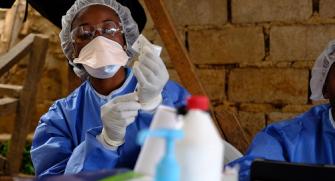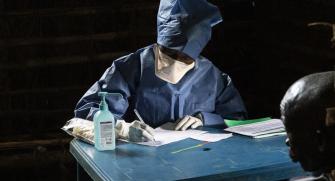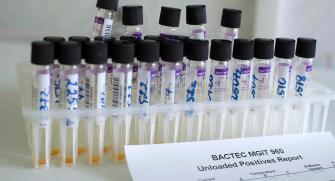Ebola: We are better prepared to respond to an epidemic
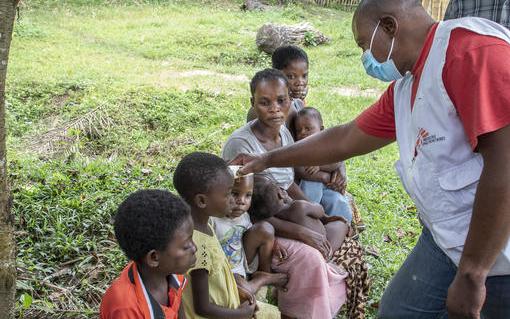
Long confined to remote, isolated contexts, in 2014, an epidemic that started in the rural forested region of Guinea spread to neighboring Liberia and Sierra Leone, ultimately affecting densely populated urban areas. With at least 30,000 cases and 11,000 deaths reported, the outbreak in West Africa constitutes the largest Ebola epidemic in history, causing more cases and deaths than all other Ebola epidemics combined. The second largest outbreak occurred in 2018 in the DRC, with nearly 3,500 cases and 2,300 deaths reported. The DRC has experienced more outbreaks than any other country, with their 8th, 9th, 10th, 11th, 12th, and 13th epidemics occurring within five years.
Over the last few years, in the face of multiple epidemics in areas characterized by humanitarian crises related to chronic insecurity, armed conflict, and political instability, the development of new tools has improved epidemiological and clinical monitoring. In addition, innovative approaches have fostered significant scientific advances in clinical knowledge of the disease, prevention, treatment, and models of care. Below we discuss the experiences with Ebola acquired by Epicentre through MSF programs as well as through the development of new preventive and therapeutic approaches.
Part 1 | Epicentre support to MSF programs and partners: technical expertise, resources for epidemiological and clinical monitoring, and innovations.
Coordination and support of epidemiological activities
During the recent Ebola epidemics, with various actors and MSF sections intervening in complex, ever-evolving contexts spanning diverse, geographically dispersed areas, Epicentre helped coordinate and support epidemiological activities. This included offering technical expertise to MSF epidemiologists deployed in the field and to partners. As a component of this, Epicentre participated in a special unit in the DRC dedicated to supporting data management, quality control, analyses, and reporting to answer key operational questions.
At the end of 2022, Uganda was faced with an Ebola epidemic of the Sudan strain. Epicentre epidemiologists collaborated on surveillance activities, documented cases and their contacts to ensure a comprehensive understanding of the epidemic, collected qualitative data to understand the social context of the epidemic and adapt the response. Although quickly brought under control, this epidemic revealed both successful approaches and remaining challenges that should help prepare for future epidemics.
Resources for epidemiological and clinical monitoring
During the 10th Ebola epidemic in DRC, Epicentre developed new tools to facilitate global coordination and support to epidemiological activities. These included:
- Monitoring tools (databases and registers) to systematically collect patient data,
- Automated reports for more efficient communication, and
- A web platform to visually display, through graphs and tables, data on case management and the evolution of the epidemic, accessible to all partners through usernames and passwords.
Furthermore, Epicentre took a lead role in an alternative process of standardization, centralization, harmonization, and compilation of patient data to improve the management of the epidemic. For the first time in an epidemic of such magnitude, the same monitoring tool was used across all patient sites, allowing for the efficient creation of a combined, comprehensive Ebola health facility dataset. An export of this dataset was shared weekly with the DRC Ministry of Health and used to generate key performance indicators on the Epicentre web platform and in situational reports.
Expanding on the initial dataset that recorded patient data at admission, Epicentre also digitalized extensive clinical data on patients diagnosed as Ebola positive over the course of their hospitalization across all Ebola health facilities. This clinical database recorded signs and symptoms, biochemistries, cycle threshold values, and prescribed treatments. The rationale was to identify indicators and trends of deterioration among patients to allow early and adapted supportive interventions by clinicians to inform Ebola care and save more lives.
Innovation: Decentralized model of care
Despite active case finding and a very sensitive suspect case definition, care-seeking practices represented a significant challenge during recent Ebola epidemics, with Ebola cases either accessing care late or dying in the community without ever accessing care. With Ebola, even the difference of a single day can be very important to survival.
During the initial response to the 10th epidemic in the DRC, two types of Ebola health facilities were built in larger cities, parallel to the existing medical system:
- Transit centers: Patients diagnosed Ebola positive in these centers were then transferred to treatment centers.
- Treatment centers: Patients received Ebola treatment on site.
In both types of centers, patients testing negative for Ebola were sent home if their health condition had improved since admission or transferred to a hospital if they required further medical care.
The reluctance of the population to go to these centers is one of the factors that increased the time from symptom onset to receiving appropriate care. In addition, even though staff at all types of health facilities were supposed to be trained and equipped to prevent and control the spread of infections, health facilities not specializing in Ebola care often employed inadequate infection control measures resulting in Ebola exposures.
Faced with these observations, MSF and ALIMA initiated a strategy of decentralization of care, for which Epicentre provided support in the form of data collection and analysis.
Unlike the transit centers, the decentralized centers were isolation units located on the premises of highly frequented local health centers or hospitals. Decentralized centers allowed suspected Ebola cases to remain on the premises of the health center or hospital where he/she had sought care. This improved patient acceptance of isolation, with no need to call for an ambulance to transport an Ebola suspect patient to an Ebola treatment/transit center for testing. Moreover, it allowed patients to be cared for in a healthcare setting with which they were familiar while waiting for the Ebola test result. If the Ebola test was negative, the patient was removed from isolation and treated for their non-Ebola condition. If the Ebola test was positive, the patient was offered transfer to an Ebola treatment center.
The decentralized strategy ultimately aimed to improve patient outcomes through early access to diagnosis and treatment for all diseases and reduced risk of Ebola transmission in the community through the early isolation of cases.
Epicentre analyzed data from 12 treatment centers, 9 transit centers, and 21 decentralized centers to see whether the decentralized model of care facilitated early detection and admission of cases. The delay from symptom onset to admission in the decentralized centers was slightly shorter than that observed in the other two types of centers, for both Ebola positive and Ebola negative patients, and no disadvantages were observed for patients admitted first to a decentralized center in terms of risk of death. Earlier isolation of suspected cases may benefit others as well through a reduction of risk of Ebola transmission." says Rebecca Coulborn, epidemiologist at Epicentre.
Innovation: An algorithm to predict the probability of being an Ebola case
Out of more than 60,000 admissions to an Ebola health facility during the 10th epidemic in the DRC, 4% tested positive for Ebola. As the testing protocol required two PCR tests 48 hours apart, patients stayed at least three days in an Ebola health facility once admitted. To alleviate the burden on patients and Ebola health facilities, Epicentre developed and evaluated the performance and feasibility of an algorithm for use at triage. The tool assessed the clinical manifestations of Ebola, such as bleeding gums, cough, and diarrhea, as well as the potential Ebola exposures of patients, to identify the most important predictors of Ebola infection.
Evaluations showed that the algorithm is an efficient, easy-to-use tool, allowing for the classification of patients into high-, medium-, and low-risk categories, according to their probability of being confirmed Ebola positive. Promising potential applications of the tool include:
- Priority Ebola testing for high-risk patients,
- Earlier administration of appropriate treatment (for both Ebola-positive and Ebola-negative patients),
- Reduced risk of possible Ebola transmission during isolation, and
- Case management strategies adapted to a patient’s risk category.
Ongoing work to capitalize on lessons learned and share practices
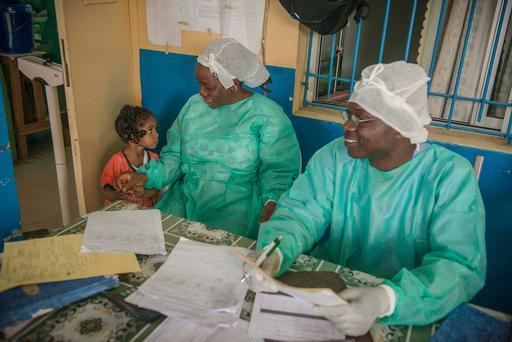
Lessons learned during previous epidemics offer opportunities to improve the management of future responses.
Development of an Ebola-specific score of severity
In early March 2021, Epicentre organized the first meeting of a working group comprised of the DRC Ministry of Health, MSF, and various partners involved in caring for Ebola patients during the recent epidemics.
Using the clinical data compiled by Epicentre during the 10th Ebola epidemic in the DRC, the working group classified and prioritized essential clinical questions to be answered. The next step of this initiative includes the development of an Ebola-specific score of severity to help clinicians identify deterioration in patients at an early, reversible stateto prevent death.
In addition, by comparing trends and the outcomes of different supportive care interventions that were used historically in Ebola health facilities, the clinical database can facilitate a clinician’s choice of supportive care interventions and improve the monitoring and adjustment of these interventions (for example, the ratio of intravenous fluids and vasopressors given to a patient.). Implementation of the clinical database in real-time in future epidemics constitutes another opportunity to further improve Ebola care.
Part 2: Therapeutics, vaccines
Two treatments that, when administered early, reduce deaths from Ebola virus
During the 10th Ebola epidemic in the DRC, a clinical trial called PALM was conducted. Its objective was to compare the efficacy of four experimental therapies. Patients of all ages diagnosed as Ebola positive by PCR were recruited. In the PALM trial, which was published in December 2019 in the NEJM, two treatments, REGN-EB3 and mAb114, showed a survival rate of around 65% in treated patients, compared with 33% for the epidemic as a whole.
When these treatments were administered to people with a low viral load, i.e., who had not yet reached a serious stage of the disease, mortality dropped to around 10%. .
To learn more read the publication A Randomized, Controlled Trial of Ebola Virus Disease Therapeutics.
These two monoclonal antibodies (Inmazeb and Ebanga) were approved by the US Food and Drug Administration at the end of 2020 for the treatment of Ebola infection in adults and children. The next steps will be to see how these monoclonal antibodies can be used even earlier in the course of infection.
Vaccination
Vaccinate those most at risk of infection
Since October 2018, the Strategic Advisory Group of Experts (SAGE) on Immunization now recommends the use of rVSVΔG-ZEBOV-GP vaccine, manufactured by Merck and prequalified by WHO, during outbreaks of Ebola disease. It can be used as part of a ring vaccination strategy, which involves vaccinating contacts, contacts of contacts, and health workers to stop the spread of the epidemic.
The effectiveness of this approach was demonstrated during the epidemic that took place in West Africa between 2013 and 2016 during a phase 3 clinical trial. The trial evaluated the efficacy of a single intramuscular dose of rVSVΔG-ZEBOV-GP in the prevention of laboratory-confirmed Ebola disease. In addition, the vaccine was well tolerated in vaccinated individuals and produced a rapid immune response after a single dose.
Analysis of data collected during the 10th epidemic in the DRC has enabled the efficacy of this vaccine to be assessed on a large scale outside a clinical trial. In collaboration with the Institut National de Recherche Biomédicale (INRB) and the Ministry of Public Health of the Democratic Republic of Congo (DRC), this test-negative study compared Ebola PCR positivity rates between vaccinated and non-vaccinated individuals. It was established that, after ten days, vaccination reduced the risk of developing the disease by 84%. An observational study showed for the first time that vaccination halves the mortality rate among people infected with Ebola.
Moreover, in January 2021, UNICEF, WHO, IFRC and MSF announced the creation of a global stockpile of this single-dose injectable vaccine to enable countries, with the support of humanitarian organizations, to contain future outbreaks of Ebola disease by ensuring that populations at risk have rapid access to vaccines during outbreaks.
At the same time, studies are continuing to evaluate the duration of protection offered by this vaccine.
A 2nd vaccine recommended by WHO
In response to the major risks posed by Ebola, the two-dose Ebola vaccine developed by Johnson & Johnson, consisting of Zabdeno® (Ad26.ZEBOV) and Mvabea® (MVA-BN-Filo), has received approval from the European Medicines Agency (EMA) and has been recommended by the WHO. As of June 2021, the SAGE recommends its use both during outbreaks for individuals at some risk of Ebola exposureand preventively, before outbreaks, for national and international first responders. It is administered in two doses: the interval between the two doses is currently being explored. This second Ebola vaccine provides an additional tool to prevent the spread of epidemics and protect populations before outbreaks reach high-risk areas.
Epicentre is participating in two studies on this vaccine:
- One in Uganda in the Mbarara region since the summer of 2019: The trial included 800 health professionals and personnel on the front line in the event of an outbreak, such as cleaners, ambulance crews, mortuary, and burial teams. The objective was to assess immunogenicity.
- The other in DRC: the aim of the study was to accumulate additional data on safety, efficacy, and immunogenicity in a high-risk population. A two-dose prophylactic vaccine regimen of Ad26.ZEBOV, MVA-BN-Filo was acceptable, well-tolerated, and safe when administered to adults, children, and pregnant women and can be delivered in an EVD-affected region with good uptake of both doses.
This study should also provide information on the administration of a delayed 2nd dose (more than 56 days).








